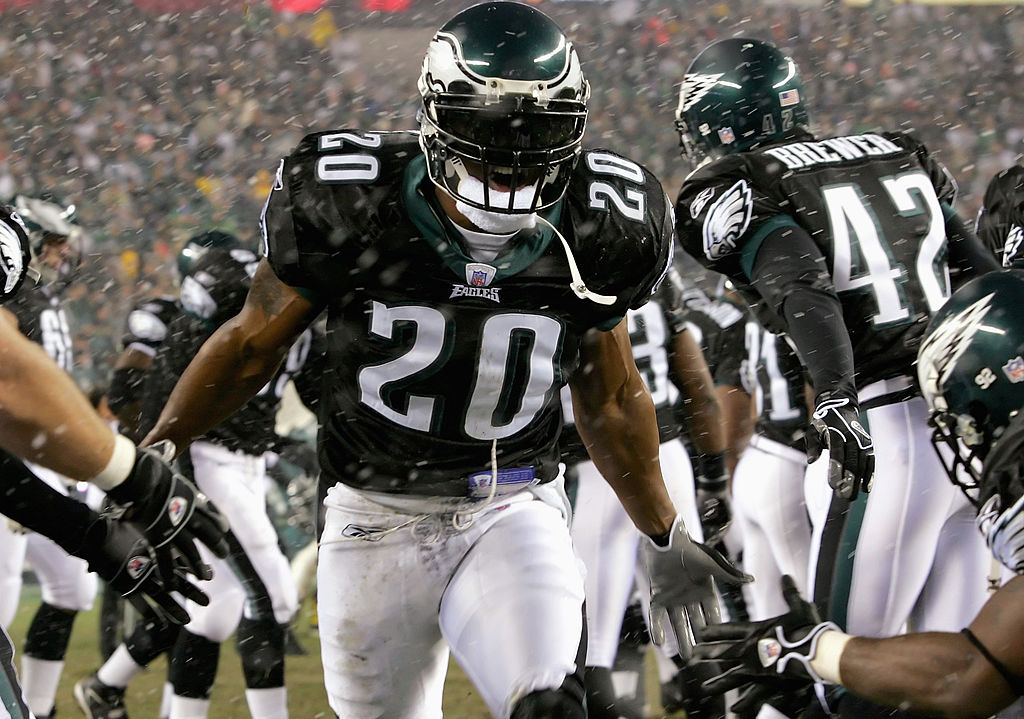NFL
Why Do Some NFL Players Get to Wear Black-Tinted Visors?

The NFL ranks among the most competitive sports leagues on the planet. For that reason, players are always searching for any way to give themselves a slight advantage, with sticky gloves being one of the most recent and game-changing trends. In some cases, the NFL steps in to regulate or even prohibit the use of certain accessories.
Black-tinted visors are one area where, starting in 1998, the NFL clamped down. Yet you still occasionally see a player with a black visor on their helmet. If you’ve ever wondered why that is, keep reading. Here you’ll learn about the perceived advantages of tinted visors, the reasons why the league chose to regulate them, and why certain players are still allowed to use them.
The advantages of black tinted visors for NFL players
Back before dark visors were banned, NFL players favored them for a number of reasons. To begin with, the visor acts much like a pair of sunglasses, cutting down on glare and making it easier to see in even the sunniest of circumstances. Dark visors block more than just the sun, however.
That dark tint also makes it harder — if not downright impossible — for opposing players to see where you are looking. That obviously presents a significant advantage, preventing opponents from anticipating your next move. That kind of inscrutability also gives players an extra degree of intimidation.
Finally, it bears noting that much of the appeal of dark visors also came down to simple style. NFL players are just as fashion-conscious as their counterparts in the NBA. A dark visor adds a significant amount of visual appeal, helping a player stand out on the field and making them look even better in photographs.
Why the league cracked down
Tinted visors originated in the late ’80s, thanks largely to a single player: Minnesota Vikings offensive lineman Randall McDaniel. McDaniel suffered an eye injury during practice just before the start of his rookie season. The Vikings’ equipment manager zip-tied a dark visor to the front of McDaniel’s helmet to protect his sensitive eye against sunlight.
The look quickly gained traction among other players, and for the next 10 years or so, dark visors were a commonplace sight in the NFL. In 1998 the league finally cracked down — and not without good reason. The NFL’s number one concern had to do with player safety. Dark visors made it hard for medical staff to tell whether an injured player was conscious or not.
At the time, there was no way to remove a helmet’s shield without taking the entire helmet off — and medical staff didn’t want to do that, for fear of worsening any neck or head injuries. Today, only players who have received a special medical exemption from the league are permitted to wear dark visors. Migraines and/or sensitivity to sunlight are the most common reasons for such exemptions.
Those exemptions remain quite rare. According to Sports Illustrated, only 14 players received dark visor approval during the 2018 season.
The new Oakley helmet visors
Following the 1998 ban, players could still choose to wear a visor on their helmet — but the visor could only be made of clear plastic. This year the NFL seems to have relaxed that rule slightly. The NFL recently signed a four year deal with Oakley to produce their helmet visors. As part of that deal, players now have the option to wear Oakley’s Prizm Clear shields.
Those visors have a light pink tint to them. Oakey designed the visor to enhance the colors on the field for the players. While the NFL didn’t explicitly state that they would allow the tinted visors, players soon began wearing them in games nonetheless. No protest came from the league, who seems to have given tacit approval of the new visors.











